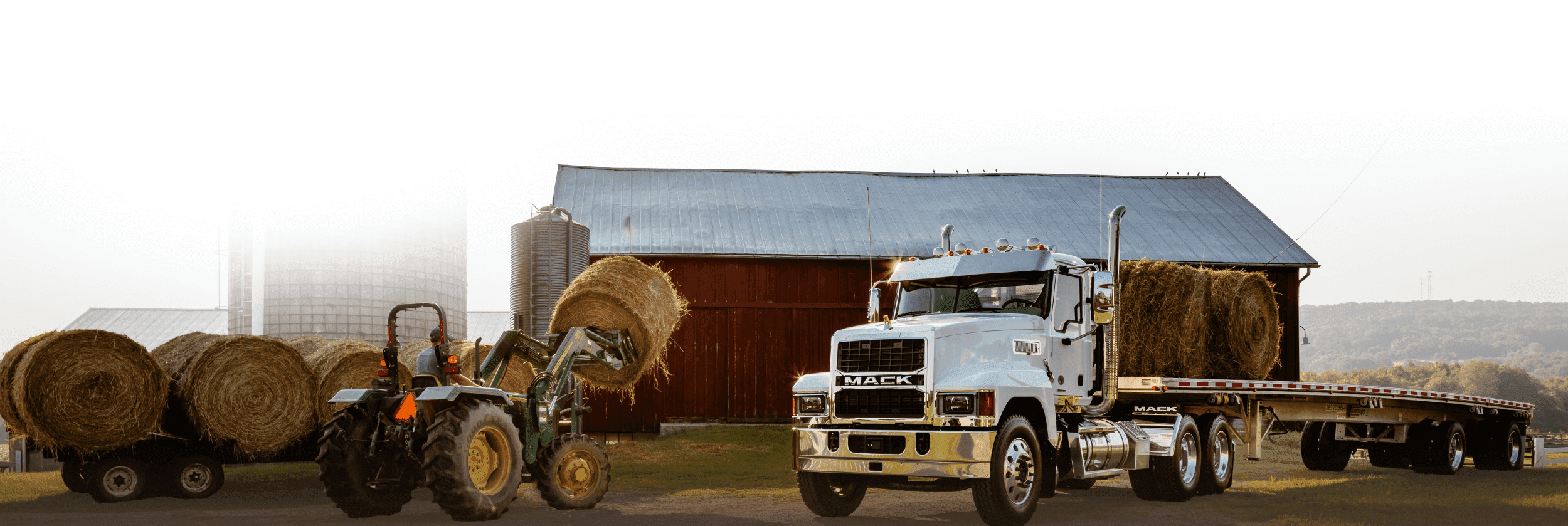During harvest, the job doesn’t stop with pulling crops. You're hauling grain, clearing debris, moving silage, spreading gravel and you need the right dump trailer to handle it all. The wrong choice can slow you down. The right one keeps you running efficiently and profitably through the entire season.
Let’s break down your options so you can make a confident decision in your next trailer purchase.
Know What You're Hauling
Dump trailers pull their weight in all kinds of harvest support tasks:
- Grain and corn – high-volume, needs space and stability
- Silage or manure – wet, heavy, sealed tubs work best
- Field debris – branches, fencing, high sides make it easy
- Gravel or rock – for access roads or drainage support, bottom dumps spread evenly
- General farm needs – fertilizer, seed, or even equipment, end dumps add flexibility
- Specialized for demolition: a demo scrap trailer is a specialized dump trailer designed for hauling demolition debris and scrap metal (heavy loads of concrete, metal, woods), reinforced tubs required
The trailer you use can make or break the job. That’s where trailer type comes in, choosing the right configuration helps you work smarter, not harder.
Dump Trailer Types: Pros and Trade-Offs
End-Dump Trailers
Great for: High-volume hauls like grain, gravel, and field debris
- Tall sides = more cubic space
- Quick rear unload
- Needs flat ground or risks tipping
- Not ideal for wet, sticky materials
- Liner options available: UHMW (Ultra-High-Molecular-Weight Polyethylene)
- Liners: designed for handling abrasive materials like sand, gravel, and aggregates. They provide a low-friction surface that facilitates easy unloading and reduces wear and tear on the trailer.
Why choose it: You want to move a lot in a single haul, and you’ve got the space to dump cleanly.
Side-Dump Trailers
Great for: Silage, wet manure, mixed or sticky loads
- Dumps left or right quickly
- Very stable when unloading
- Fully sealed for wet loads
- Slightly lower capacity than end-dumps
Why choose it: You need versatility and safety — especially when terrain isn’t perfectly flat.
Belly-Dump Trailers
Great for: Spreading gravel, sand, lime or dry bulk
- Unloads through gates underneath
- Keeps a low center of gravity
- Spreads material while driving
- Not suited for large or sticky debris
Why choose it: You want precise spreading and fast cycle times — no tipping required.
What to Look For in a Dump Trailer
Capacity
- Match volume considerations to your crops and your schedule
- Check GVWR to stay compliant with your power unit
- Bigger isn't always better — especially if you're hauling short distances
Axle Setup
- Tandem axle: More maneuverable, fewer parts to maintain
- Tri-axle: Higher payload, smoother ride, longer trailer
Dump Angle
- A steeper angle (45° or more) clears the bed faster
- Shallow dump angles can leave material behind
Floor Material
- Steel: Strong and affordable, but can rust
- Aluminum: Lightweight and rust-resistant, higher price
- Wood (sometimes): Traction-friendly, best for loading equipment
Gate Design
Top-Swing Gate
This gate style swings open from the top and down, providing versatility for unloading materials.
High-Lift Options
Both air and hydraulic high-lift systems are available for the top-swing gate, offering different approaches to unloading.
Barn Door Style Gate
This gate opens from the side, like traditional barn doors, and is available in both aluminum and steel.
Air Assist High Lift Gate
This option features cylinders and a lift assembly enclosed in the rear pockets for added protection.
Grain Door
A smaller door within the main gate, allowing for controlled discharge of materials
Quick tip: Make sure the gate and bed combo matches your most common load. (E.G. A grain-tight gate is no good if you're mainly hauling wet silage.)
Maintenance Considerations
Harvest season is hard on gear. Here’s how to keep your trailer in rotation, not in the repair bay:
- Clean after each use – especially silage, manure, or fertilizer
- Inspect tires, hydraulics, and lights weekly
- Grease pivot points and hinges regularly
- Watch for rust – especially in steel trailers
- Check gates and seals before every load
A little attention now means fewer surprises when the fields are full and time is tight.
TEC Equipment Can Help
No two harvest operations are the same. The right dump trailer for your neighbor might be the wrong one for your fields, crops, or crew. Choose based on your primary support task, how and where you haul, and how much uptime you absolutely need.
Still unsure which trailer is the right fit? TEC Equipment has you covered with a range of dump trailers and expert advice from folks who know what it takes to keep a harvest moving. Let’s get you set up for a smoother season. Stop by your nearest TEC Equipment location or shop our trailer inventory online.









